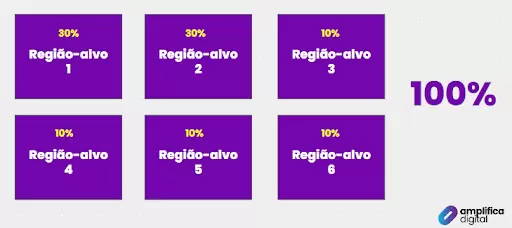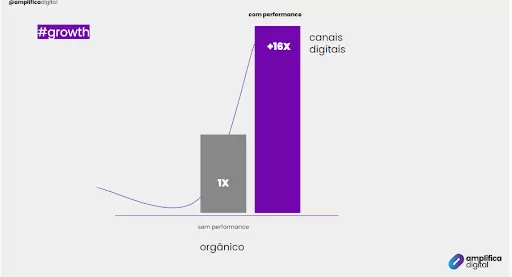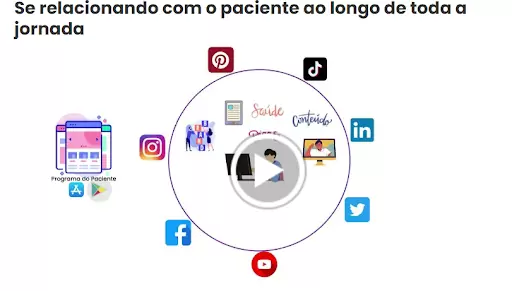Pharma 360 performance for patient program
In this post you will learn more about engagement and performance for patient programs
All content discussed here has only one objective: to help you with your digital strategy in the pharmaceutical industry.
We will talk here about:
- User behavior, digital experience
- Research on the Digital Leaflet X Patient Program
- Case study - Patient Program
- Demographics and how this affects the page experience
- Channels to include the patient in the journey, LGPD and Patient programs,
- Brand Performance and Success Indicators.
Starting with an overview of the evolution of social networks, we focus on user numbers. Here it is worth noting that the number of networks your persona uses directly influences your digital strategy.

Think about your patient program, the person who walks this path, what social networks does he use? How can your brand be part of this patient's life through them?
The advertising of drugs that require a medical prescription in the mass media is prohibited (Anvisa RDC n 96/2008). Based on this, what other paths can we take to publicize a patient program?
We can't talk about the drugs, but we can bring content related to pathologies and their solutions. We can talk about health and well-being, always related to the brand of the program.
How to start a performance journey focused on the patient program?
We must start from the beginning: building a digital base.
It may be that the brand already has ongoing campaigns and journeys in other media. However, when we think about performance, the digital base, that is, presence in the main networks of patients, the website and its navigation and applications are fundamental so that we can start to encourage the patient's path in digital through performance. From this, build a consistent action plan, from medium to long term, executing, analyzing and correcting them when necessary.
When it comes to journeys, the key word is user experience. Google released a survey where 53% of visits to a website tend to be abandoned if the page takes more than 3 seconds to load.
If your user's journey is perfectly structured, but at the site visit stage, the page takes more than three seconds, you can have 100 people willing to engage in the program, but 47 of them will give up because of the barrier that your site has.
So, here's the tease: How is the experience on your Patient Program page?
So far, it is clear that for a successful performance journey, the digital structure is paramount. But how prepared are the main players in the pharmaceutical industry today?
In February 2023, our team analyzed 101 pharmaceutical industry websites in Brazil. In this research we observed What is the panorama of the pharmaceutical market when it comes to the digital leaflet?

digital content
75% of the companies surveyed, had some kind of digital leaflet on the website. More than just complying with a regulation, the digital leaflet contributes to the patient's information and journey. It is worth mentioning that some of these had a load below the minimum expected.
When we mentioned that the sites had some kind leaflet, it is because many times these were limited to some text or PDF that replicated the digital leaflet, with little visual information and readability.
Here is the tease: Does the digital content available favor the experience of the people I want to access these medications?
When considering strategies for patients, we need to look beyond the specific points about pathologies, we must consider the whole, that is, loading time on the website, access to the package leaflet in an easy and didactic way, we must ask ourselves how easy is it for the patient find the information he needs?
Making an analogy with the face-to-face journey, having a slow website that is difficult to understand is analogous to bringing a client to your venture, and the space being messy, dark, poorly maintained with a service that does not solve the client's problems.
You need to take care of your digital space, just as you care about your physical space.
One of the great advantages of digital, as much as we are increasingly entering an era where actions are more protected and anonymous, is the use of tools to record user actions in the brand's digital environment.
Many of the 101 industries analyzed in our survey lacked pixels, social media offerings, and assets to generate engagement and register with the brand.
How to know the digital potential available to a Patient Program
For this, we bring here a case study based on approximate data with disease X, whose mission was to leverage the Patient Program.
The result of the analysis highlights how much the digital presence of the brand in question is taking the market share available for pathology X.
Rational Construction
| Case of Disease X between 2015 and 2020 |
Access to the Patient Program website | Volume of research on pathology X |
|---|---|---|
| 200.000 | 60 organic/month | 1000 searches/month |
Based on this information, we can unravel our research in order to know the digital environment in which this potential for access is found. We looked at factors such as website/app data and company page load time with the X pathology program.
Current patient/user/region demographics. Analysis of the registration points (conversion point) of the site itself and the competitors, thus understanding the volumetry and search flow of the pathology and observing who the organic competitors (SEO) are, thus mapping the searched keywords in which the performance also is based.
For this site with 60 monthly organic hits, we can conclude that the journey and the offer of content on it is lacking in terms of the user's consumption potential.
In addition to searches through the search engine, the brand's potential coverage is in the 200.000 diagnosed who still have the pathology and have some digital contact point, whether only on social networks, by email, WhatsApp or in fact through the search engine.
The way of interpreting the analyzed data is as or more important than just obtaining the data.
To illustrate this phenomenon, let's imagine a situation in which the diagnosed people who access the Z pathology website are between 50 and 60 years old. How this person behaves can be very different from the site's creative team, which in its 30s or 40s has a digital maturity far removed from that of the end user. This divergence generates fiction points, whether these are forms, search boxes or menus at each conversion (the user's expected action to move forward in the funnel), often leading the patient to give up on the digital journey.
Digital Journey Vs. business objective
Once the digital analysis is done, we must turn our analysis to the business and its objectives.
- Which regions does the business want to impact,
- What is the alignment of the digital objectives with the possibilities and objectives of the business? Do we want to increase the sales force from a region with already more developed digital potential?
- Which drug do we want to focus on, what is my sales and marketing team's understanding of the target pathology?

Once the project starts to move forward, the data may surprise and show that the age group or the expected behavior of marketing and sales actions does not correspond to expectations. In other words, this is the moment to once again be open to the interpretation that this information suggests and adapt the actions of your patient program. So don't get attached to planning, follow the data!
Direct media investment according to your priorities, whether pathologies and/or target region

How to distribute digital strategy and media plan efforts? Based on the Business Objectives and Digital Potentials alignment, we observe that certain results favor greater or less investment in certain regions.
Conciliate performance planning with the market intelligence, marketing and sales team so that investment direction is assertive. After all, all the information necessary for this planning is obtained through communication between these teams.
Check out the interview with Ciro Julien about Agile Teams and High Performance Sales.
Once the campaign is implemented, numbers determine when to change or not to invest in psychophysical actions.

The work of the propagandist goes hand in hand with digital actions. With a well-executed plan, the salesperson's face-to-face sales are facilitated by the familiarity generated by digital actions. After all, it's much easier to sell to someone who already knows you.
Performance or brandperformance actions increase the visibility of your Patient Program

Once your brand leaves the configured marketing environment, there is a tracking of mapped actions, storing navigation data to carry out remarketing campaigns. Putting performance into action leads the user to come into contact with the brand at different stages of knowledge of both the pathology and the program itself.
Let's use the following situation to illustrate the above statement:
With an experienced team that understands what the patient needs to be attracted by the advertisements, that is, by the performance actions, many times this team will not produce material talking about the medicine, the final product or the patient's pathology. And yes, of subjects that generate connection with that person, appealing to the human side, of the pains and goals of the person in view after naturally a lot of research.
Here in Amplifica Digital, we have a practical case in which, when building a website for a specific pathology, our first step was: we put the person who was looking for information in the chair.
Does the person diagnosed have the same journey as a family member who wants to know more about the pathology?
With that in mind, we created a journey within the site where the person who was diagnosed had different paths and answers than those who were just looking for information. However, differentiating from the first page between two major fields, these are “I need help, I have been diagnosed” and “I want to know more information about the pathology”.
In this way, all content available on digital fulfilled a humanized purpose of informing and helping the user on their journey. We remind you at this point that the main factor within a patient program journey is welcoming, empathy, thus the human factor.
Which digital channels make sense?
There are countless social networks in which you can create a digital presence aimed at patients, but it is worth focusing on the network with the greatest presence of your patient and the people who influence your patient.
As an example of an older patient's journey: impacting a son, nephew or grandson on a social network where they are more present than the patient himself can be more important than the patient's own network. After all, these people also think more about the importance of quality of life for the patient.
Channels, paths, actions and reactions of digital marketing…
We are talking about tracking, collecting information and the path taken by the digital user. This data is like thermometers for segmenting audiences. That is, those who engage in certain content, such as a specific video, a percentage of the main page, a click on the most important button.
Think of tracking as a very digital, because all people who have performed actions with previously configured tracking can be separated by lists, on which different (re)marketing actions directed at these people can be applied.
But which tools we can use to make our actions Really Data Driven Marketing?
- google analytics 4
- Hotjar
- Google Tag Manager
- cervinodata.com
- Google DataStudio or Looker Studio
- Google Search Console

Can the LGPD interfere with performance actions?
All actions and platforms suggested here are in accordance with the LGPD. Upon entering the page, he decides whether or not to accept being tracked.
All tracking tools do not identify a person with name, email or telephone number.
It's much better to send content to someone who is actually our client, has accepted to receive your content, and wants to see personalized content.

The data protection law favors the path of the user and the communication team, after all we create content with greater value, with a focus on adding value and relationship with the user. Bad content gives a bad impression. Everything you do is permanent in the user's impression of your brand, it adds to brand equity, to the market value of your brand.
How to measure the success of your Patient Program?
There are indicators of success, the so-called KPIs that are measured through the tracking settings indicated throughout the text.
These indicators naturally vary according to the objectives of each performance action. Here, it is worth remembering that each action is independent of its quality, it generates results, and this must be taken into account.
When evaluating branding, there are some metrics that indicate whether your brand is actually amplifying its digital reach, such as impressions, engagement, number of followers, interaction and content recall.
Speaking of the patient program, the success metrics are focused on conversions, that is, on the contact we manage to make with the patient, whether through registration in a form, chat, a call or another important action for your strategy, in addition to time retention and engagement.

Conclusion
- The patient journey is not linear.
- Be digitally present where your patient is!
- Use multiple channels.
- Measuring the performance of your Patient Program is essential.
- Create solutions (Websites, portals) that are easy to run A/B tests.
- Use dashboards to track actions in real time.
- Brazilians are + connected to the internet. Take the opportunity to create actions for your brand and distribute different content formats.
- Don't ignore any network, just prioritize the one that makes the most sense at the moment.
- Analyze all your patient's points of contact with your brand/website/digital inserts/patient programs.
Like what you see here? How about scheduling a meeting?

